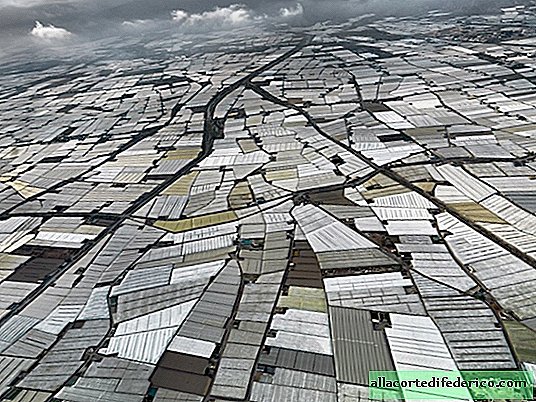Turquoise: a stone of happiness in history, culture and art
Bright blue-green turquoise for centuries was appreciated and revered by all the cultures of the world that had access to it. Mined for millennia and one of the first treasures used in artistic culture, the earliest turquoise appeared in Sinai and Persia. These deposits supplied valuable stone to the ancient Egyptians and Persians. Since turquoise is relatively easy to carve and shape, stone was used for jewelry. Other turquoise deposits and mines were located in China, Iran, the southwestern United States and Mesoamerica. Trade along the Great Silk Road allowed it to spread further to all countries.
 Turquoise mines of Nishapur, Iran
Turquoise mines of Nishapur, IranPliny, Aristotle and Marco Polo mention turquoise in their writings. The modern word turquoise came from the French language in the 17th century and meant "Turkish stone" in translation. This was the name of the jewel of the 17th-century French merchants who bought stone in Europe from Turkey.
Ancient Egyptian civilization was one of the first to use turquoise. Archaeologists have established that the first jewelry appeared in 5,500 BC. Blotches of jewelry were found in amulets, beads, collars and a golden bust of Pharaoh Tutankhamun.
 Aztec double-headed serpent, 15th century
Aztec double-headed serpent, 15th centuryThe goddess Hathor was considered the patroness of turquoise. Light blue-green color symbolized fertility and abundant vegetation. The item in the form of a beautiful turquoise scarab with a gold ring is a classic example of jewelry in the Middle Kingdom and protective amulets.
Persia (modern Iran) was another culture that began to use turquoise early. And they did it uniquely. The stone was used in architecture, mosaics that adorn the walls of mosques.
 Turquoise scarab ring. Middle Kingdom Ancient Egypt
Turquoise scarab ring. Middle Kingdom Ancient EgyptFor turquoise, the Persians used the word pērōzah, which means victory. Color is sacred and symbolizes heaven on earth. The Shah Mosque in Esfahan, Iran, is currently a UNESCO World Heritage Site. Its construction began in 1611. Turquoise was actively used together with cobalt and lapis lazuli in mosaics and complex calligraphy on walls and domes. The ceiling is covered with mucarns, this is a type of ornamented vault characteristic of Islamic architecture.
 Turquoise dome of the Shah's mosque
Turquoise dome of the Shah's mosqueIn North and South America, turquoise was valued higher than gold. She was a necessary part of art and religious ceremonies. The Aztecs of central Mexico used stone, decorating masks, shields, knives and objects for religious ceremonies and rituals. The Aztec word for turquoise is xihuitl, which can also mean "year." In the 15th century, the Aztecs wore a snake on their chest, covered with 15,000 turquoise inclusions. This decoration was sacred. Just as snakes lose their skin, turquoise means renewal and fertility. These snake figures were also called to arouse fear.
A completely different culture, but their relationship to the gem, the veneration of turquoise unites.

















